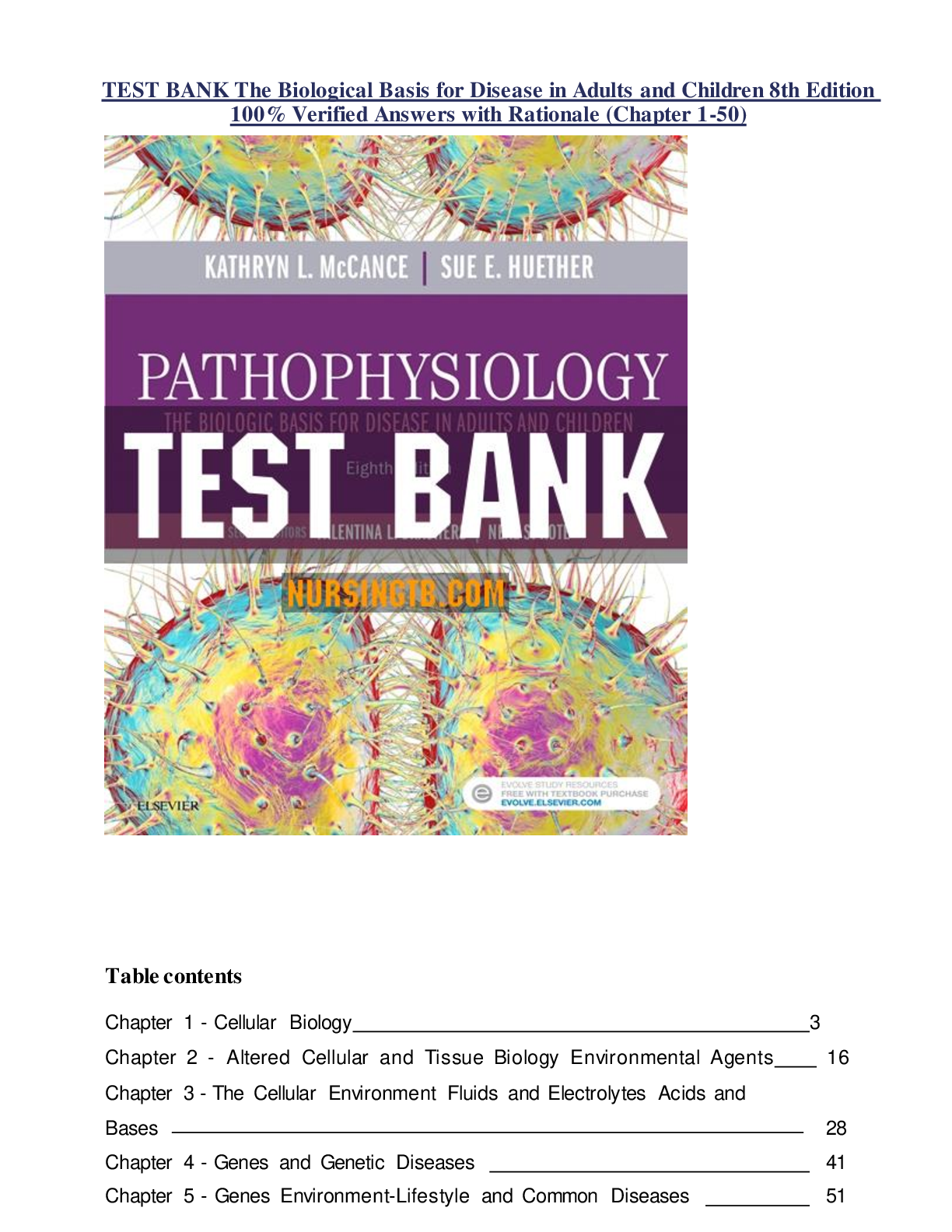Pathophysiology > EXAM > FULL TEST BANK FOR MCCANCE & HUETHER’S PATHOPHYSOLOGY 9TH EDITION, THE BIOLOGICAL BASIS FOR DISEA (All)
FULL TEST BANK FOR MCCANCE & HUETHER’S PATHOPHYSOLOGY 9TH EDITION, THE BIOLOGICAL BASIS FOR DISEASE IN ADULTS AND CHILDREN, BY JULIA L. ROGERS COMPLETED FULLY, 2023-2024, ISBN-13: 9780323789882, CHAPTER 1-49, NEWEST VERSION
Document Content and Description Below
UNIT I: The Cell Chapter 01: Cellular Biology 4 Chapter 02: Altered Cellular and Tissue Biology: Environmental Agents 18 Chapter 03: The Cellular Environment: Fluids and Electrolytes, Acids and Bas... es 31 UNIT II: Gene and Gene Environment interaction Chapter 04: Genes and Genetic Diseases 44 Chapter 05: Genes, Environment-Lifestyle, and Common Diseases 55 Chapter 06: Epigenetics and Disease 63 UNIT III: Mechanisms of Self-defence Chapter 07: Innate Immunity: Inflammation and Wound Healing 68 Chapter 08: Adaptive Immunity 83 Chapter 09: Alterations in Immunity and Inflammation 95 Chapter 10: Infections 108 Chapter 11: Stress and Disease 117 UNIT IV:Cellular proliferation: Cancer Chapter 12: Cancer Biology 124 Chapter 13: Cancer Epidemiology 137 Chapter 14: Cancer in Children 143 UNIT V: The Neurologic System Chapter 15: Structure and Function of the Neurologic System 148 Chapter 16: Pain, Temperature Regulation, Sleep, and Sensory Function 159 Chapter 17: Alterations in Cognitive Systems, Cerebral Hemodynamics, and Motor Function 174 Chapter 18: Disorders of the Central and Peripheral Nervous Systems and the Neuromuscular Junction .................................................................................................................................................................. 188 Chapter 19: Neurobiology of Schizophrenia, Mood Disorders, and Anxiety Disorders 199 Chapter 20: Alterations of Neurologic Function in Children 206 UUNIT VI: The Endocrine System Chapter 21: Mechanisms of Hormonal Regulation 213 Chapter 22: Alterations of Hormonal Regulation 222 >Chapter 23: Obesity and Stavationand Anorexia of Aging 234 UNIT VII: The Reproductive System Chapter 24: Structure and Function of the Reproductive Systems 239 Chapter 25: Alterations of the Female Reproductive System 249 Chapter 26: Alterations of the Male Reproductive System 259 Chapter 27: Sexually Transmitted Infections 265 UNIT VIII:The Hematologic System Chapter 28: Structure and Function of the Hematologic System 273 Chapter 29: Alterations of Erythrocytes, Platelets, and Hemostatic Function 283 Chapter 30: Alterations of Leukocyte and Lymphoid Function 293 UNIT IX:The Cardiovascular and Lymphatic System Chapter 31: Structure and Function of the Cardiovascular and Lymphatic Systems 300 Chapter 32: Alterations of Cardiovascular Function 311 Chapter 33: Alterations of Cardiovascular Function in Children 324 UNIT X: The Pulmnary System Chapter 34: Structure and Function of the Pulmonary System 346 Chapter 35: Alterations of Pulmonary Function 356 Chapter 36: Alterations of Pulmonary Function in Children 373 UNIT XI: The Renal and Urologic System Chapter 37: Structure and Function of the Renal and Urologic Systems 381 Chapter 38: Alterations of Renal and Urinary Tract Function 391 Chapter 39: Alterations of Renal and Urinary Tract Function in Children 401 UNIT XII: The Digestive System Chapter 40: Structure and Function of the Digestive System 409 Chapter 41: Alterations of Digestive Function 421 Chapter 42: Alterations of Digestive Function in Children 432 UNIT XIII: The Muscoskeletal System Chapter 43: Structure and Function of the Musculoskeletal System 441 Chapter 44: Alterations of Musculoskeletal Function 453 Chapter 45: Alterations of Musculoskeletal Function in Children 466 UNIT XIV: The Integumentary System Chapter 46: Structure, Function, and Disorders of the Integument 475 Chapter 47: Alterations of the Integument in Children 486 UNIT XV: Multiple Interacting systems Chapter 48: Shock, Multiple Organ Dysfunction Syndrome, and Burns in Adults 481 Chapter 49: Shock, Multiple Organ Dysfunction Syndrome, and Burns in Children 491 UNIT I: THE CELL Chapter 01: Cellular Biology McCance & Huethers: Pathophysiology the Biological Basis for Disease in Adults and Children 9th Edition, 2023 file MULTIPLE CHOICE 1. Which statement best describes the cellular function of metabolic absorption? a. Cells can produce proteins. b. Cells can secrete digestive enzymes. c. Cells can take in and use nutrients. d. Cells can synthesize fats. ANS: C In metabolic absorption, all cells take in and use nutrients and other substances from their surroundings. The remaining options are not inclusive in their descriptions of cellular metabolic absorption. PTS: 1 DIF: Cognitive Level: Remembering 2. Most of a cell’s genetic information, including RNA and DNA, is contained in the? a. Mitochondria b. Ribosome c. Nucleolus d. Lysosome ANS: C The nucleus contains the nucleolus, a small dense structure composed largely of RNA, most of the cellular DNA, and the DNA-binding proteins, such as the histones, which regulate its activity. The mitochondria are responsible for cellular respiration and energy production. Ribosomes’ chief function is to provide sites for cellular protein synthesis. Lysosomes function as the intracellular digestive system. PTS: 1 DIF: Cognitive Level: Remembering 3. Which component of the cell produces hydrogen peroxide (H2O2) by using oxygen to remove hydrogen atoms from specific substrates in an oxidative reaction? a. Lysosomes b. Peroxisomes c. Ribosomes d. Endosome ANS: B Peroxisomes are so named because they usually contain enzymes that use oxygen to remove hydrogen atoms from specific substrates in an oxidative reaction that produces H2O2, which is a powerful oxidant and potentially destructive if it accumulates or escapes from peroxisomes. Ribosomes are RNA-protein complexes (nucleoproteins) that are synthesized in the nucleolus and secreted into the cytoplasm through pores in the nuclear envelope called nuclear pore complexes. Lysosomes are saclike structures that originate from the Golgi complex and contain more than 40 digestive enzymes called hydrolases, which catalyze bonds in proteins, lipids, nucleic acids, and carbohydrates. An endosome is a vesical that has been pinched off from the cellular membrane. PTS: 1 DIF: Cognitive Level: Remembering 4. Which cell component is capable of cellular autodigestion when it is released during cell injury? a. Ribosome b. Golgi complex c. Smooth endoplasmic reticulum d. Lysosomes ANS: D The lysosomal membrane acts as a protective shield between the powerful digestive enzymes within the lysosome and the cytoplasm, preventing their leakage into the cytoplasmic matrix. Disruption of the membrane by various treatments or cellular injury leads to a release of the lysosomal enzymes, which can then react with their specific substrates, causing cellular self- digestion. The chief function of a ribosome is to provide sites for cellular protein synthesis. The Golgi complex is a network of flattened, smooth vesicles and membranes often located near the cell nucleus. The smooth endoplasmic reticulum is involved in steroid hormone production and removing toxic substances from the cell. PTS: 1 DIF: Cognitive Level: Remembering 5. Which cAMP-mediated response is related to antidiuretic hormone? a. Increased heart rate and force of contraction b. Secretion of cortisol c. Increased retention of water d. Breakdown of fat ANS: C Antidiuretic hormone leads to increased retention of water in the body. Epinephrine causes increases in heart rate and force of contraction. Increased cortisol secretion is due to ACTH. Breakdown of fat is due to glucagon. PTS: 1 DIF: Cognitive Level: Remembering 6. During which phase of the cell cycle is DNA synthesized? a. G1 b. S c. G2 d. M ANS: B The four designated phases of the cell cycle are: (1) the G1 phase (G = gap), which is the period between the M phase (M = mitosis) and the start of DNA synthesis; (2) the S phase (S = synthesis), during which DNA is synthesized in the cell nucleus; (3) the G2 phase, during which RNA and protein synthesis occurs, the period between the completion of DNA synthesis and the next phase (M); and (4) the M phase, which includes nuclear and cytoplasmic division. PTS: 1 DIF: Cognitive Level: Remembering 7. What organic compound facilitates transportation across cell membranes by acting as receptors, transport channels for electrolytes, and enzymes to drive active pumps? a. Lipids b. Proteases c. Proteins d. Carbohydrates ANS: C Proteins have several functions, including acting as receptors, transport channels for electrolytes, and enzymes to drive active pumps Lipids help act as the “glue” holding cell membranes together. Proteases cause the breakdown of protein. Carbohydrates are involved in cellular protection and lubrication and help produce energy via oxidative phosphorylation. PTS: 1 DIF: Cognitive Level: Remembering 8. Understanding the various steps of proteolytic cascades may be useful in designing drug therapy for which human diseases? a. Cardiac and vascular disorders b. Autoimmune and malignant disorders c. Gastrointestinal and renal disorders d. Endocrine and gastrointestinal disorders ANS: B Understanding the various steps involved in this process is crucial for designing drug interventions. Dysregulation of proteases features prominently in many human diseases, including cancer, autoimmunity, and neurodegenerative disorders. Cardiac, vascular, gastrointestinal, renal, and endocrine disorders do not involve this process. PTS: 1 DIF: Cognitive Level: Remembering 9. Which structure prevents water-soluble molecules from entering cells across the plasma membrane? a. Carbohydrate chains b. Glycoprotein channels c. Membrane channel proteins d. Lipid bilayer ANS: D The bilayer’s structure accounts for one of the essential functions of th [Show More]
Last updated: 9 months ago
Preview 1 out of 499 pages
Instant download

Instant download
Reviews( 0 )
Document information
Connected school, study & course
About the document
Uploaded On
Aug 22, 2023
Number of pages
499
Written in
Additional information
This document has been written for:
Uploaded
Aug 22, 2023
Downloads
0
Views
65


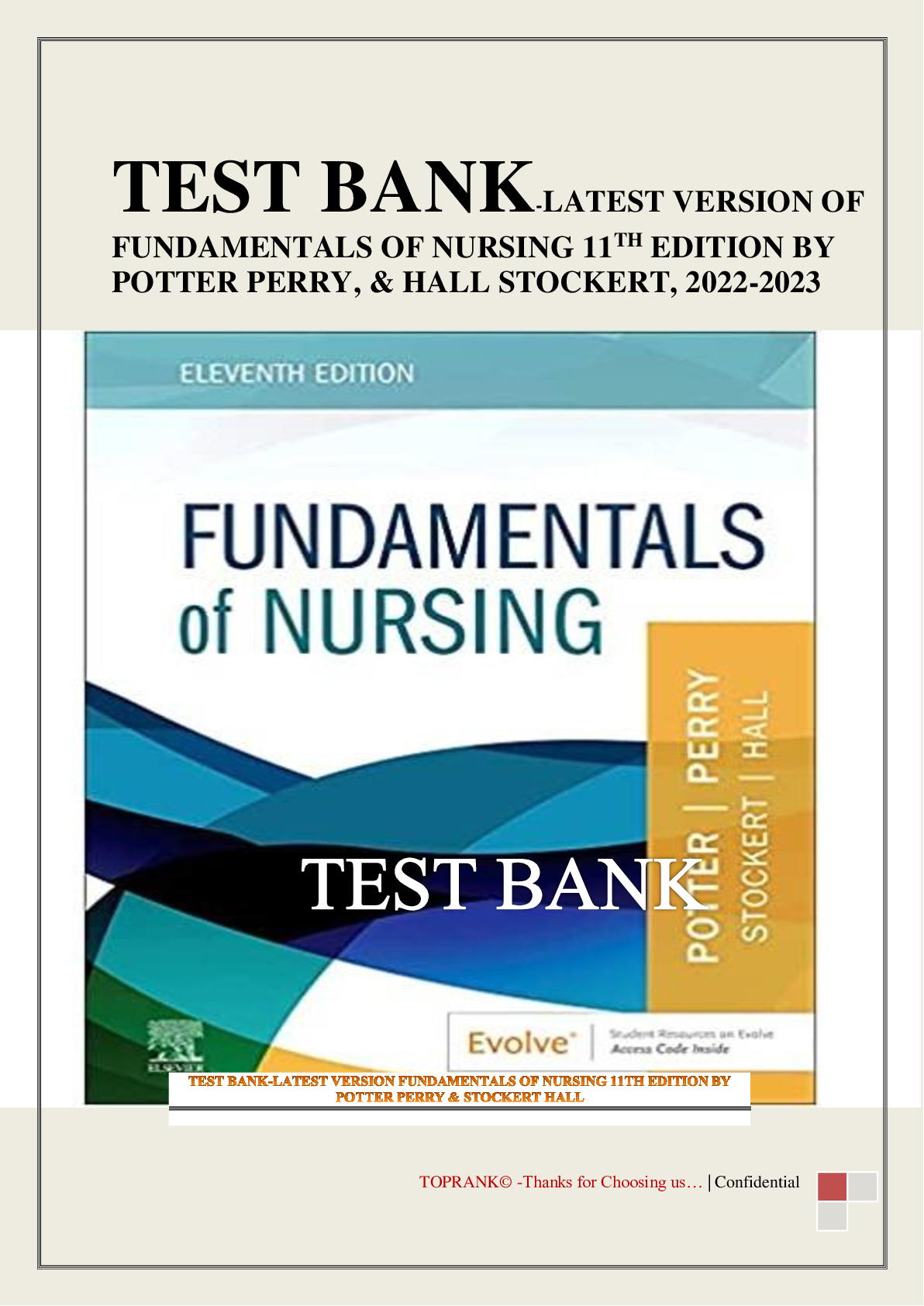
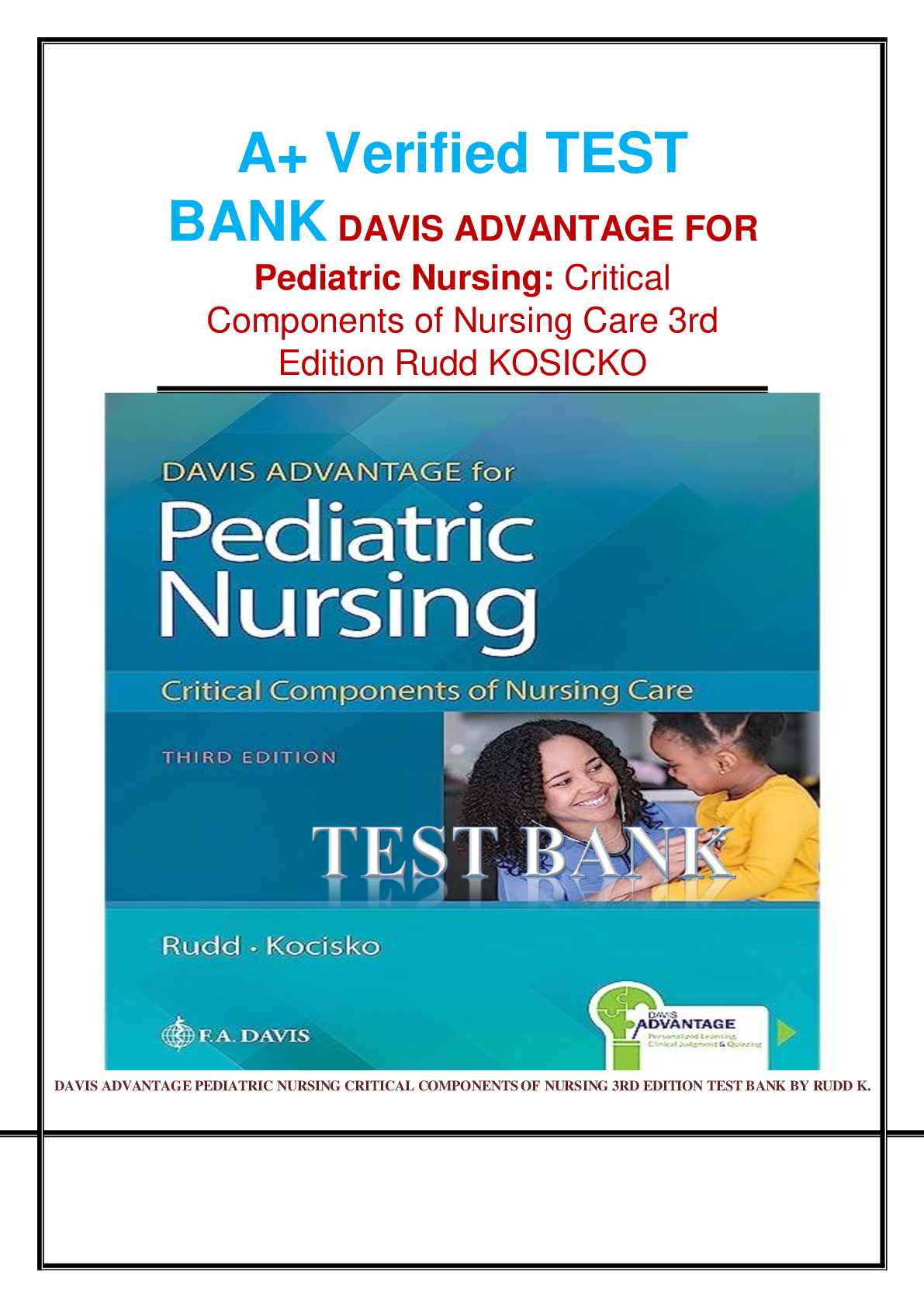
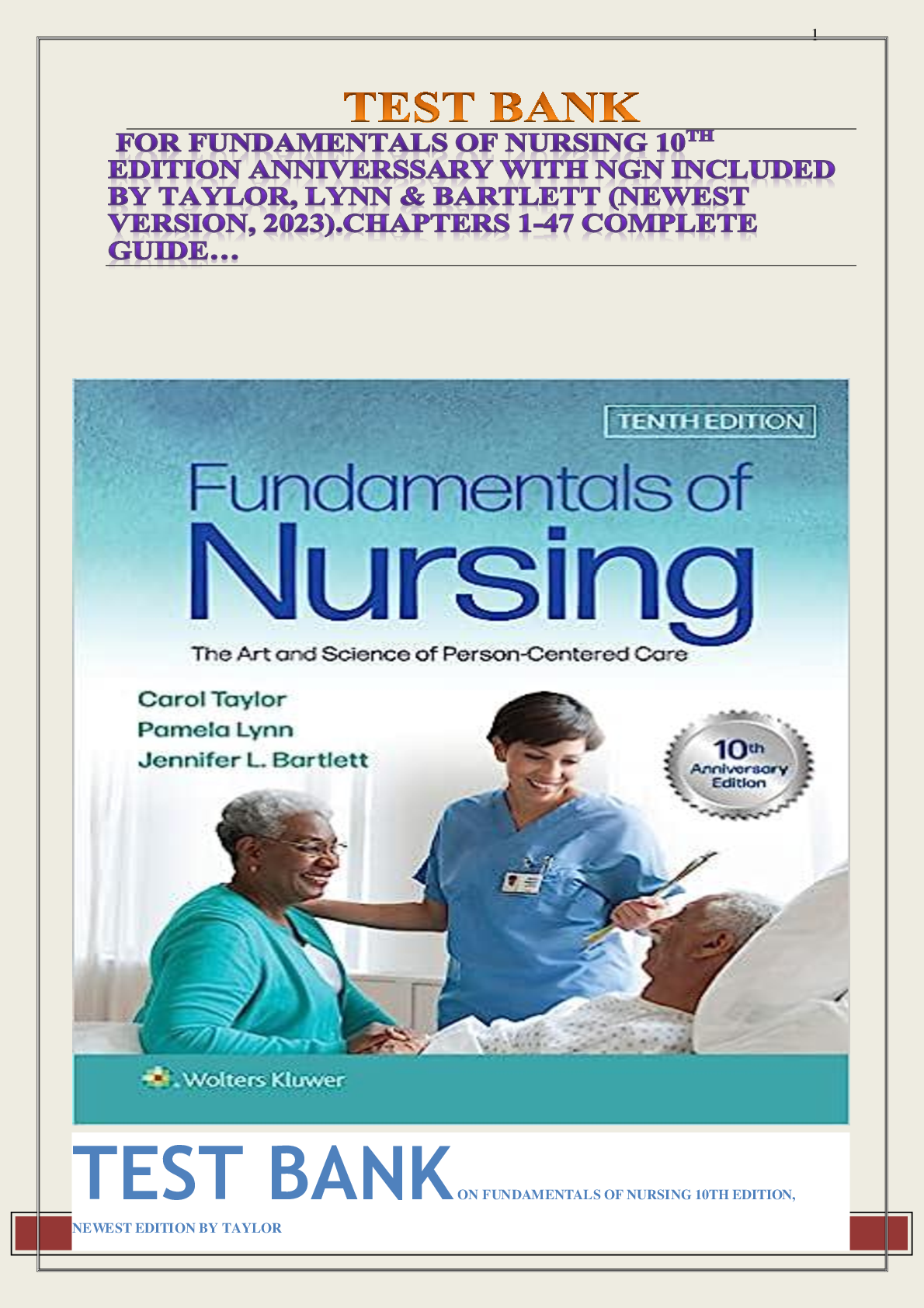
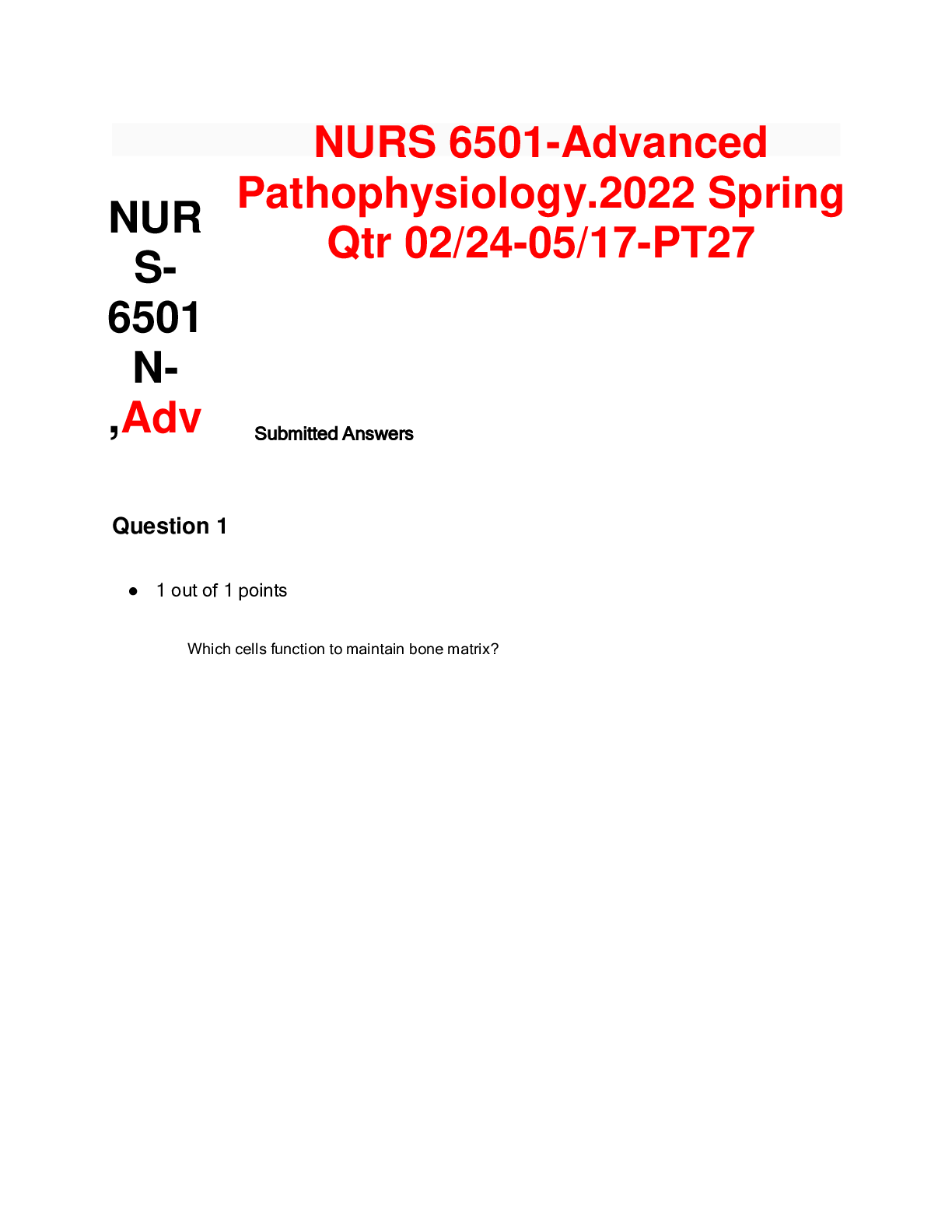


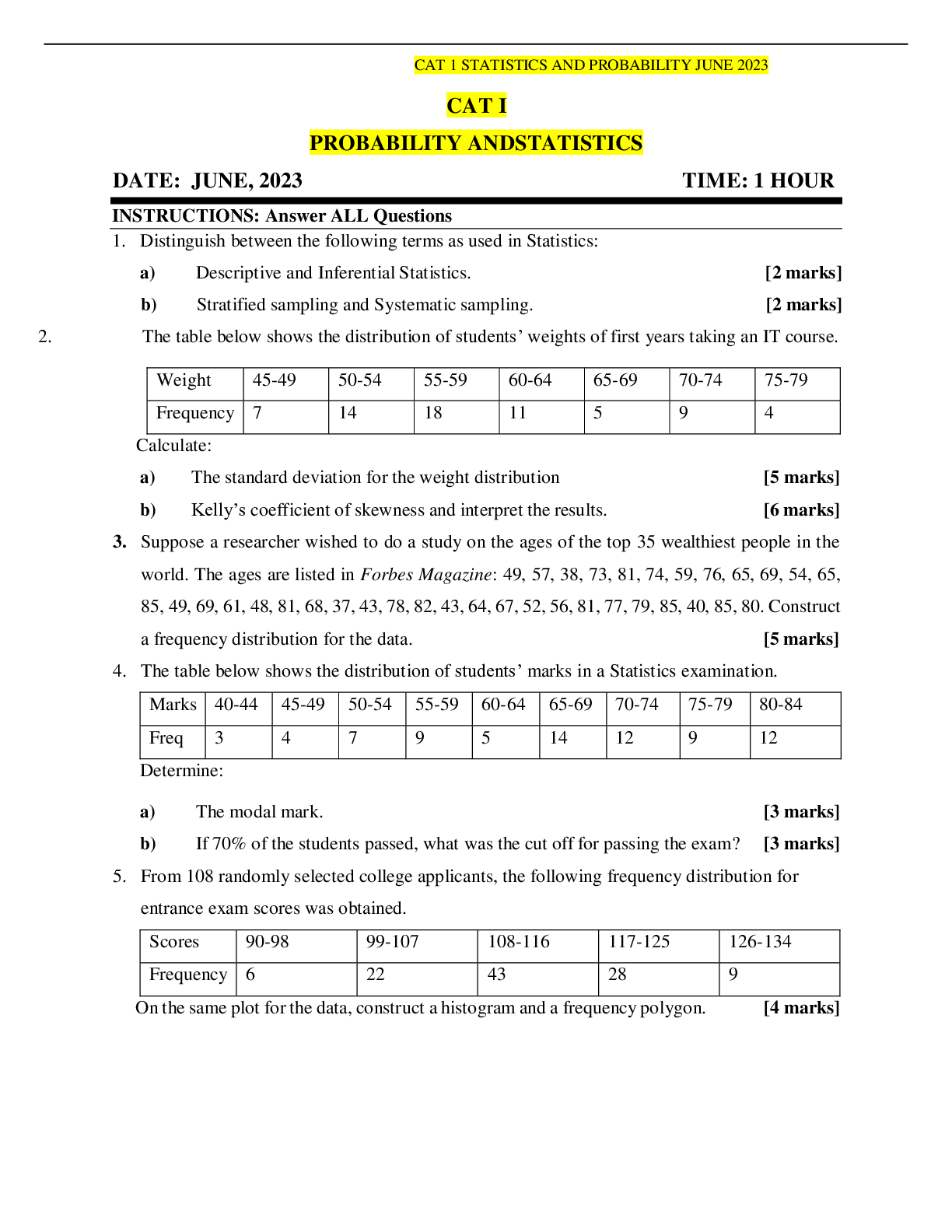
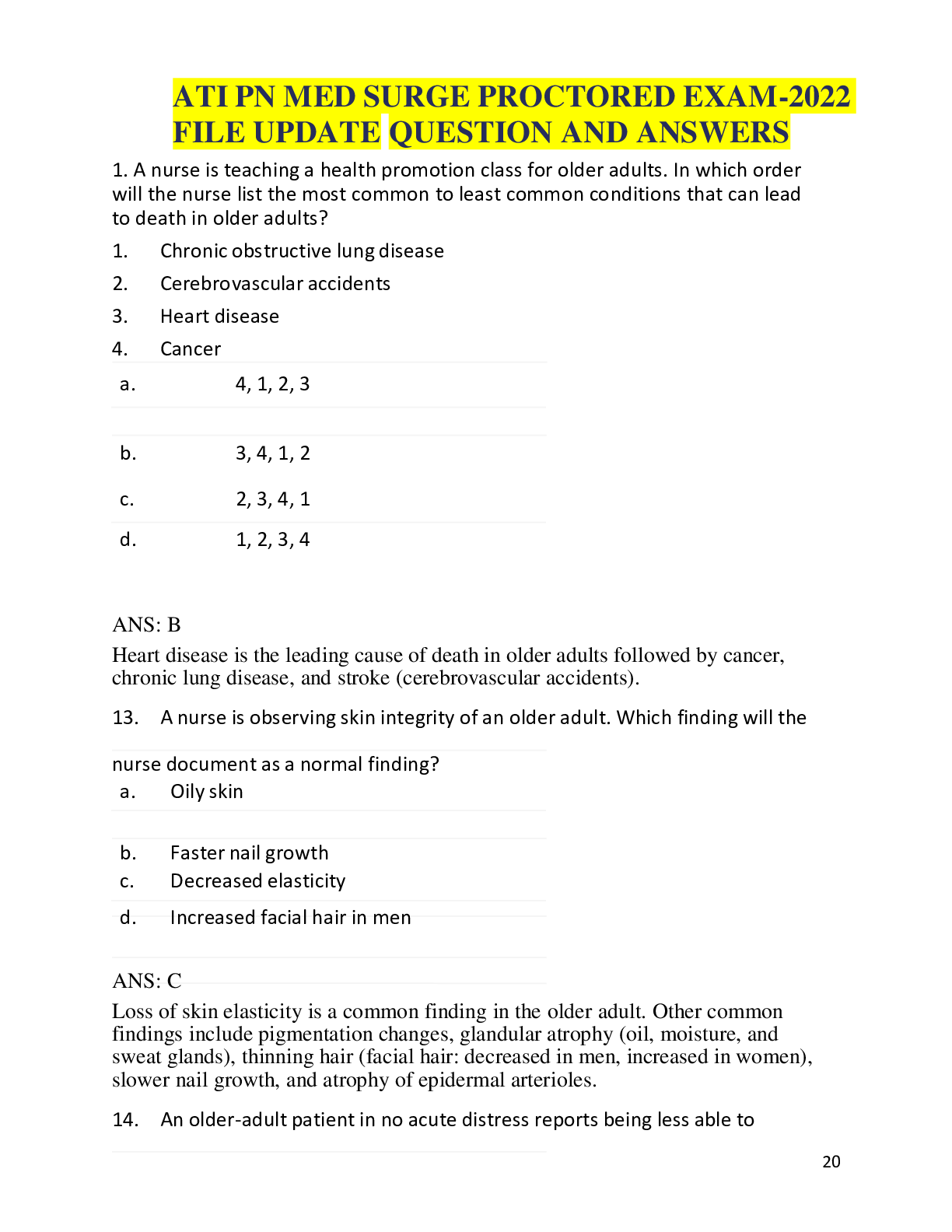
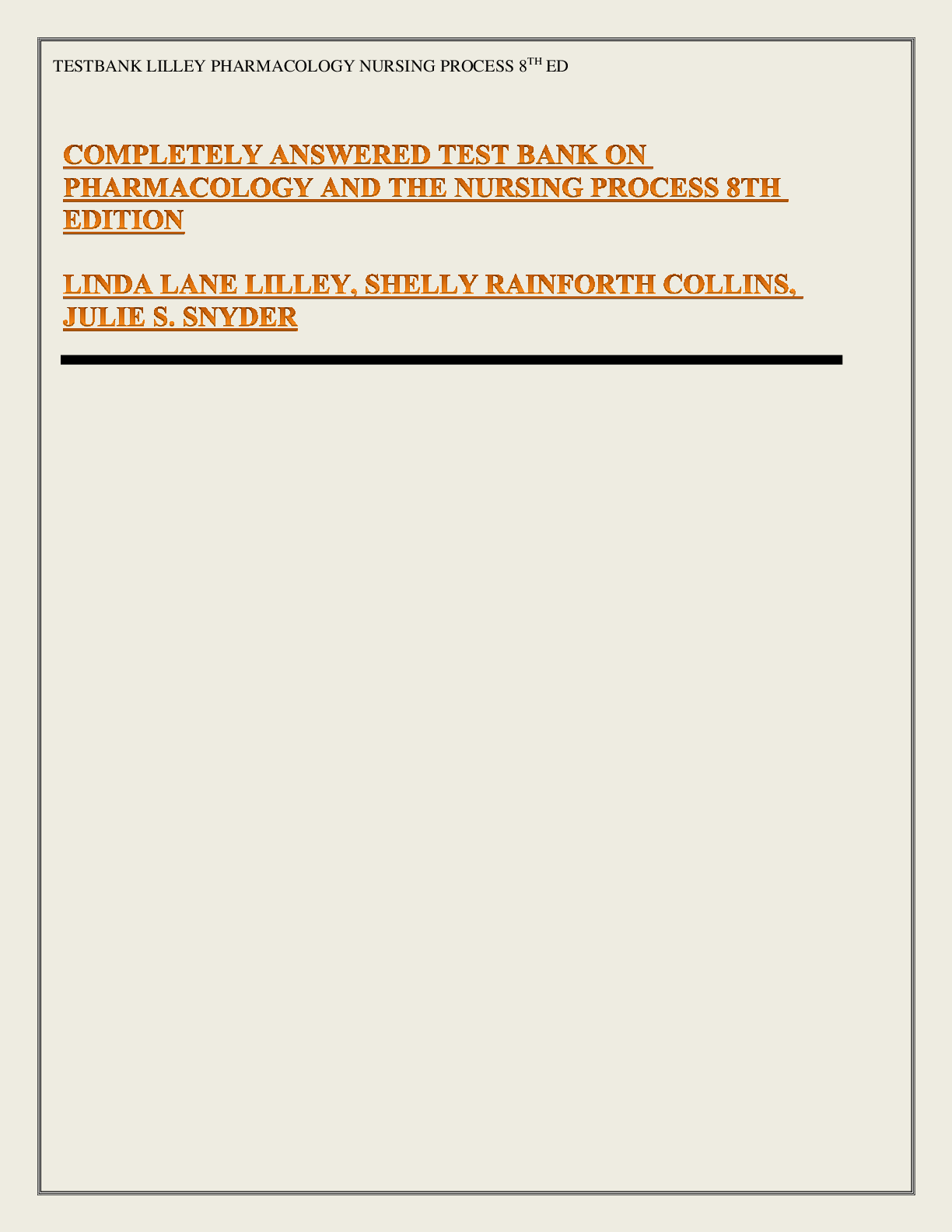

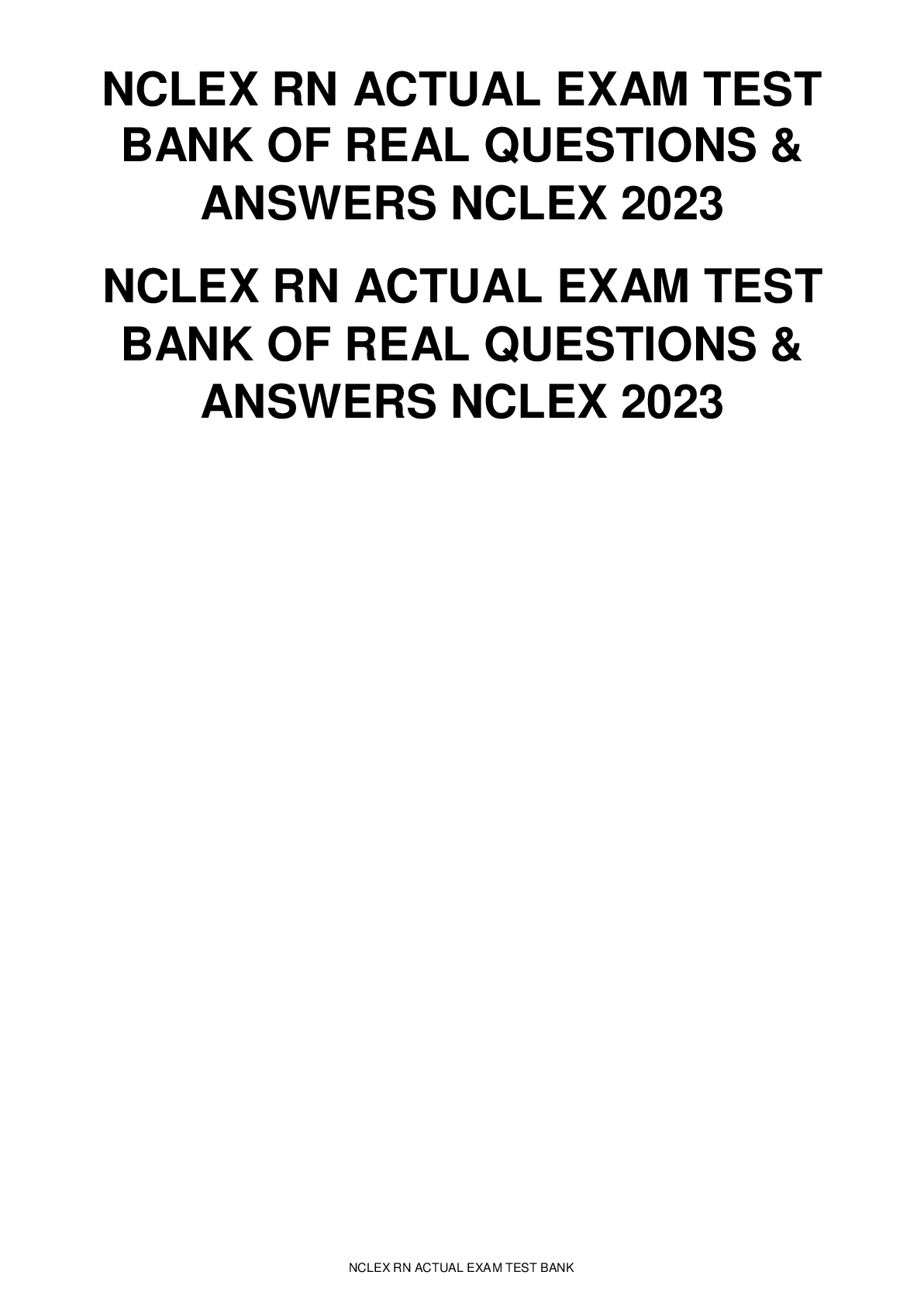

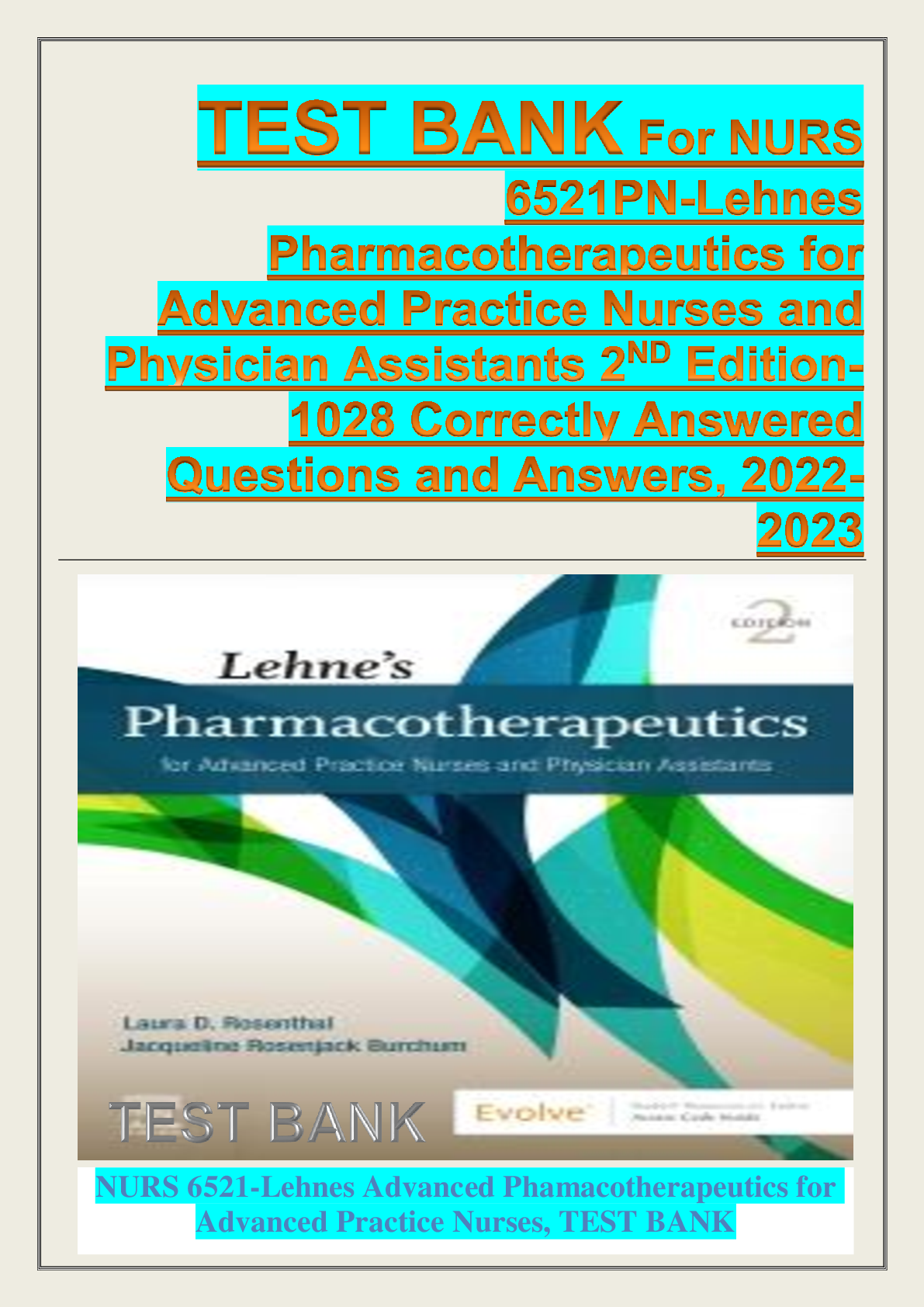


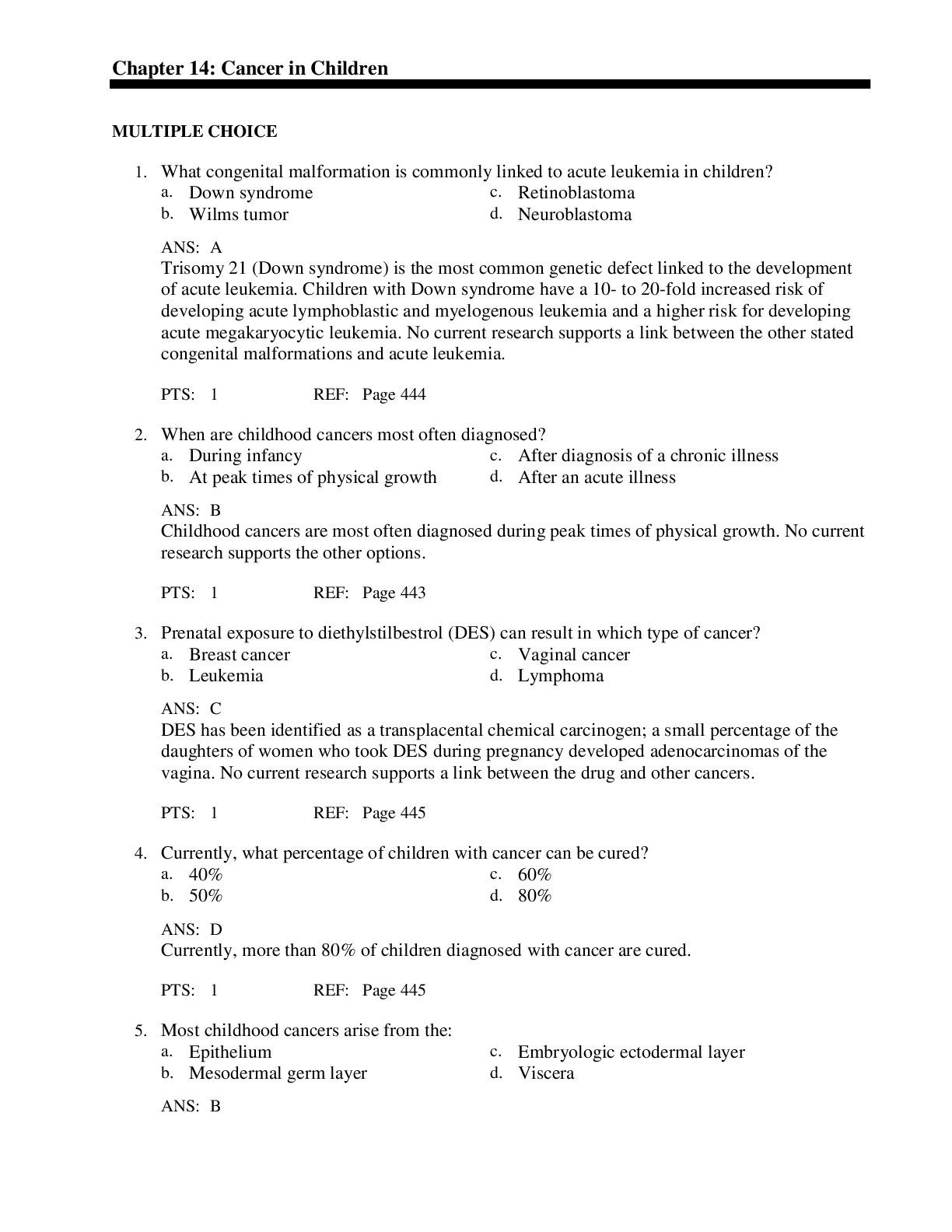


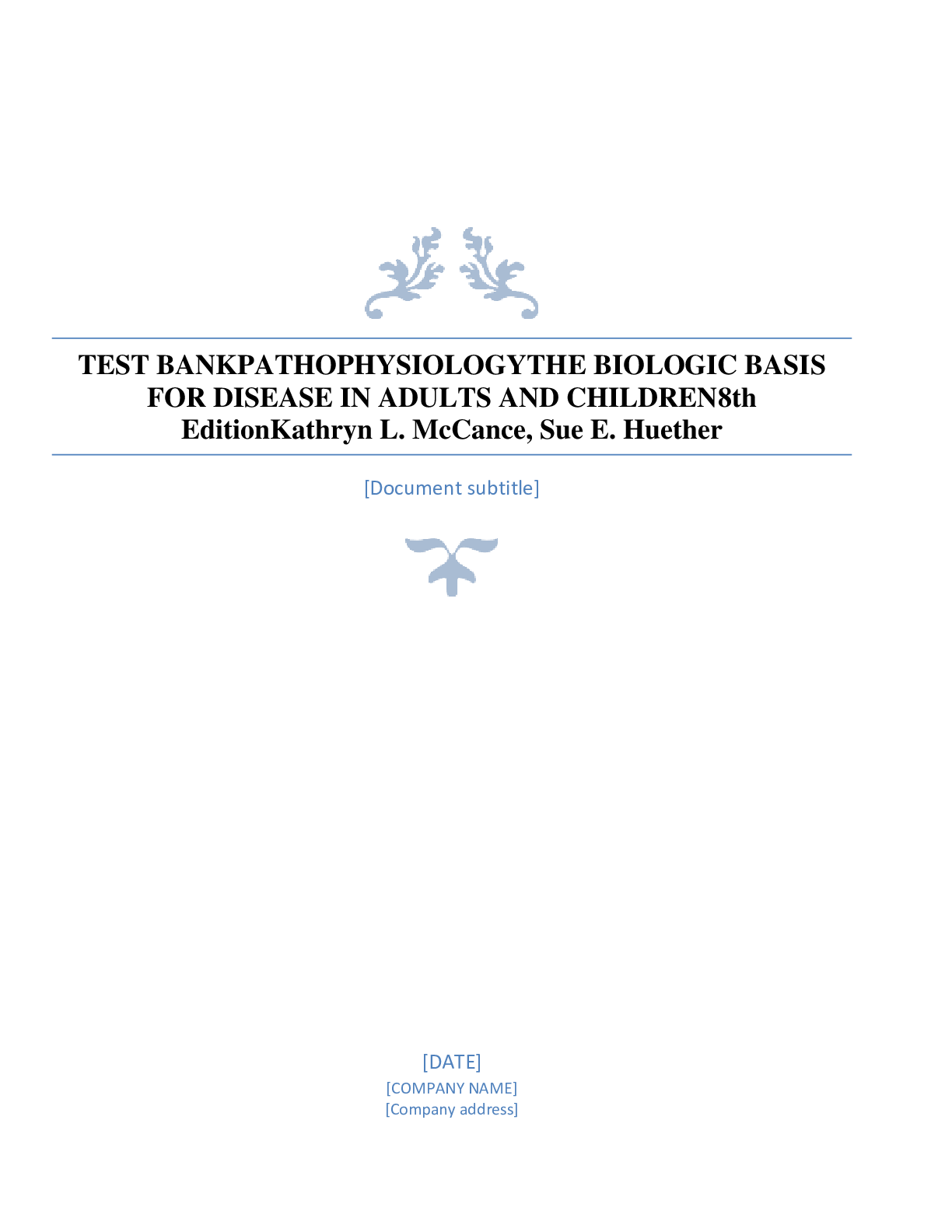

 (2).png)




